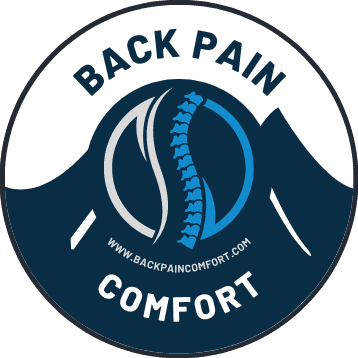
It’s a beautiful morning, and as you bend down to tie your shoes, you feel it – a sharp twinge in your back. The discomfort serves as an unwelcome reminder of the back pain that’s been haunting you for weeks. If this sounds familiar, you’re not alone. Countless individuals around the world suffer from back pain, and while there can be numerous causes, there’s one solution that’s gaining attention: core strength. By the end of this article, you’ll understand why strengthening your core can be your ticket to a pain-free back and a healthier life.
Understanding the Core: More than Just Abs
Contrary to popular belief, the core isn’t just about those sought-after “six-pack” abs. It’s a complex series of muscles, encompassing your abdominal muscles, back muscles, and even the muscles around your pelvis. Think of your core as the sturdy central link in a chain connecting your upper and lower body. It plays a pivotal role in almost every movement we make and every activity we engage in, from lifting grocery bags to swinging a golf club.
Why Core Strength Matters for Back Health
- Stability and Balance: A strong core lays the foundation for stability and balance in the body. It ensures that you don’t overburden certain muscles, leading to strains or other injuries.
- Improved Posture: Weak core muscles can lead to slouching, which puts additional stress on the spine and back muscles. A robust core helps maintain an upright posture, reducing strain on the back.
- Shock Absorber: Your core acts as a natural shock absorber. It cushions the spine from heavy impacts or sudden movements, ensuring the back is less prone to injury.
- Efficient Movement: With a powerful core, our movements are more fluid, controlled, and efficient. This means the back is less likely to be unexpectedly twisted or pulled, which can lead to pain.
Effective Ways to Strengthen the Core
- Planks: This isometric exercise is excellent for building endurance in both the abs and back. Ensure your body forms a straight line from head to heels, and hold the position for as long as you can.
- Bridge Exercise: Lying on your back with knees bent and feet flat, lift your hips off the floor until they’re in line with your knees and shoulders. This move strengthens the lower back and glutes.
- Bird-Dog: From a hands-and-knees position, extend one arm in front of you and the opposite leg behind you. It challenges your core’s stability and improves back strength.
- Pilates and Yoga: These mind-body practices focus on controlled movements and breathing, both of which are excellent for core strengthening and flexibility.

But What If I Already Have Back Pain?
If you’re already dealing with back pain, don’t fret. It’s essential to approach core strengthening gently. Begin with low-impact exercises, and consult a physical therapist or fitness professional to ensure you’re doing movements correctly and safely. Over time, as your core becomes stronger, you’ll likely notice a reduction in your back pain.
Muscle Imbalances: A Silent Culprit
Sedentary lifestyles, characterized by prolonged sitting and minimal physical activity, can lead to muscle imbalances. For instance, tight hip flexors from sitting can cause an excessive arch in the lower back, leading to pain. A strong core helps counteract these imbalances by evenly distributing the load and stress across the spine and surrounding muscles.
Practical Steps for Everyday Life
While exercises are pivotal, incorporating habits in daily life is equally crucial. Here are some practical steps:
- Mindful Movement: Be conscious of your movements. Whether it’s bending to pick something up or twisting to look behind, ensure you move from the hips and shoulders rather than just the waist.
- Ergonomic Workspaces: Adjust your chair, desk, and computer so that your posture is neutral and relaxed. This reduces strain on both your back and core.
- Regular Breaks: If your job requires sitting for extended periods, make it a habit to stand, stretch, and walk briefly every hour.
- Wear Supportive Footwear: Believe it or not, the shoes you wear can impact your back. Supportive footwear ensures even weight distribution and reduces unnecessary strain on the back.

Conclusion
Back pain can indeed be debilitating, impacting our daily activities and overall quality of life. However, understanding the profound connection between core strength and back health offers a ray of hope. By focusing on building a resilient core, we can not only alleviate current back pain but also establish a protective barrier against potential future back issues.
Remember, your core is the centerpiece of your body’s physical function. Just as a tree needs a sturdy trunk to withstand winds and storms, your body requires a robust core to thrive in daily activities without the shadow of back pain. Embrace core training, and step into a future where every bend, twist, and movement is a testament to your body’s strength and resilience.






